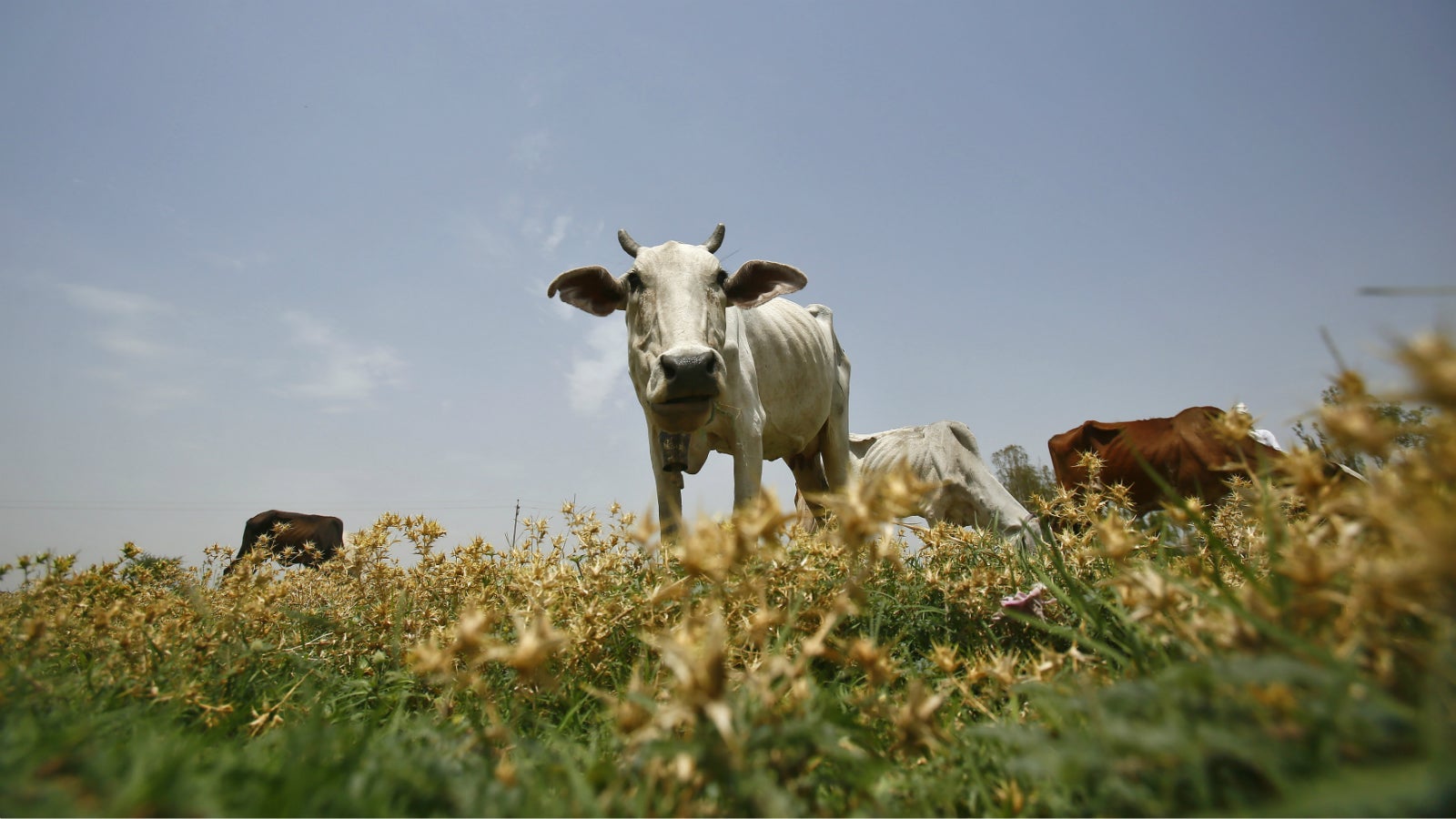India’s first national conference on cows featured much bovine banter and some bickering
The Narendra Modi government has taken its love for the cow to a whole new level.


The Narendra Modi government has taken its love for the cow to a whole new level.
On May 16, at a packed auditorium in New Delhi’s Vigyan Bhavan—a venue with a long history of hosting stately, diplomatic events—two ministers from Modi’s cabinet took centre stage to chart out a policy to improve the lives of India’s cows. The country’s home minister, Rajnath Singh, was unable to make it to the event at the last minute.
The “National Conference on Gaushalas” (cowsheds), was reportedly the first conference of its kind in India, entirely focused on saving the country’s cows.
From increasing milk yields to promoting indigenous varieties of cattle, the conference—led by environment minister Prakash Javadekar and agriculture minister Radha Mohan Singh—also touched upon the sensitive issues of cow slaughter and smuggling.
“We have to see how can we meet the challenge of increasing cow’s productivity, how can one take better care of cows and how can their security be ensured against smugglers and other cruel incidents,” Javadekar said in his address. His colleague, Radha Mohan Singh, meanwhile stressed that “livestock are the backbone of the rural economy” and that they form “the basis of occupation of 60 million people.”
Over the past two years, cows have inadvertently meandered into the heart of India’s political conversation. They’ve become potent ammunition at election rallies. People have been lynched on the mere suspicion of consuming beef, while many others have been imprisoned for cow smuggling. A number of Indian states have enacted laws that prevent cow slaughter—instead putting the necks of buffaloes on the line.
The Modi government, however, wants to make it even better for India’s cows.
“We are working on a new scheme and proposal for which we will also write to all states. The plan is to keep some land in the periphery of jungles for producing healthy and quality grass for cows and we can do this under Mahatma Gandhi NREGA,” Javadekar said at the conference. “We can then provide this grass as fodder for cows to farmers and others like ‘gaushalas’ for free.”
Still, some were not pleased.
“Why are people clapping at what the government is saying? Has the government put an end to cow slaughter? Till that happens, everything that this government says is meaningless,” Jitendra Malik, an attendee at the event told the Indian Express newspaper. “This government is not serious on cows.”
But not everyone agrees that the Modi government’s cow-friendly policies make sense.
“When you come up with policies on improving food for cows and creating more land for them, you are putting humans in direct competition with cows for food,” Jairoop Riar, a campaign coordinator at the Federation of Indian Animal Protection Organisations (FIAPO), an animal welfare organisation said.
“We will have to cut down forests to increase grazing land when millions of humans are starving. Instead of all this, we need better policies on animal welfare, improving the existing conditions of the gaushalas, and a policy on getting rid of old cows.”
India currently has close to 200 million cattle, which constitute about 14% of the global livestock. Asia’s third largest economy is also the world’s fourth largest producer of beef—which primarily includes buffalo meat—and the largest exporter of beef.
Nearly 40% of India’s Muslim population currently consume beef, while over 26% of Indian Christians eat the meat, according to data from India’s National Sample Survey Office (NSSO). Less than 2% of the country’s Hindus are beef-eaters.